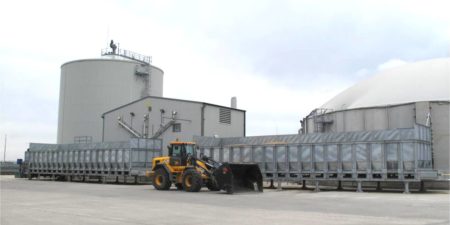AD Infeed Hoppers
Anaerobic Digestion – AD Infeed Hoppers at Staples
Two of the largest AD infeed hoppers ever built by Tong Engineering were assembled into a Lincolnshire anaerobic digester, one of the first exemplar projects supported by the Environmental Transformation Fund.
The project took shape at Staples Vegetables plant at Wrangle, near Boston, where vegetables out-of-specification at the packhouse or bypassed in the field will be used to generate electricity for supply to the site and surplus for the grid.
The digester needs a constant flow of vegetables and also maize to maintain 24-hour a day operation – and Tong Engineering were tasked with designing and manufacturing suitable intake AD Infeed hoppers.
“The feeder hoppers had to be twice the size of any we’d made before to store enough material for 24 hours’ working,” says Charles Tong, managing director of Tong Engineering.
“What’s more, they also need to withstand the potentially corrosive nature of the material. We looked at technology used to handle other organic material — including a muck spreader — to come up with the final design.”
To handle the daily load the two 130 cubic metre capacity hoppers had to be massive — 19 metres long, 4 metres wide and 4 metres high. The hoppers were fitted with twin scrapers not hauled by rubber belts as with conventional intake hoppers but by chains resembling those used on a ship’s anchor.
The vegetables or maize are then picked up by spinning blades in a teaser assembly to provide a steady flow into the dosing modules where the ‘diet’ is mixed with water before going into the digesters.
“Tong Engineering have been supplying us with machinery for our vegetable processing operation for many years,” says Vernon Read, marketing director of Staples Vegetables. “They have a reputation for reliability and where possible we prefer to support a local manufacturer.”
The galvanised steel hoppers, made in modular form and each weighing 35 tonnes, are now continuously feeding the digester 24 hours a day. Heat generated by the digestion will be used to chill packhouse areas through heat absorption coolers, reducing energy usage considerably, with excess heat warming the offices and staff buildings.

Share this post